From horse-drawn cars to compressed-air motors to battery powered streetcars to propane buses: what public transportation in Chicago looked like and how it got around, from 1857-1970.
Buried in the midsts of the wonderful Internet Archive is a wonderful old CTA publication, Horses to Horsepower: A Pictorial Review of Local Transportation in Chicago Since 1857. Below is a gallery of the city's various modes of travel, but a couple forms deserve calling out.
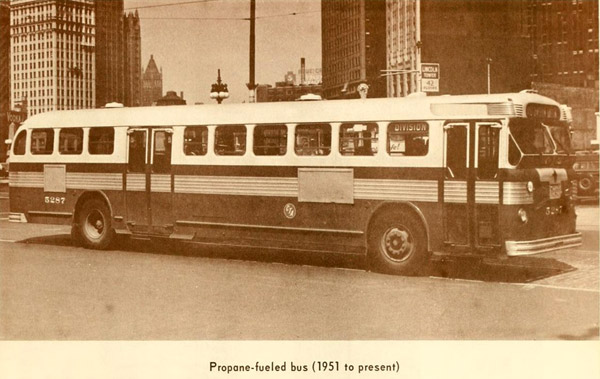
This is one of the curiosities of Chicago transit history that confuses me.
From 1951-1976, the CTA ran propane-fueled buses, and the CTA ran more propane buses than any operator in the world. They were comparatively inexpensive to operate (during the oil crisis of the early 1970s, the switch from propane to diesel crippled CTA finances), quiet and odorless, and they're coming back around as a technology. It was something of a controversy in 1960, when the CTA spent $48,000 ($375k in constant dollars) studying the merits of each system, even though CTA engineers vastly preferred propane. The study found that the propane buses were cheaper to maintain, and recommended the city continue to buy them.
At some point between 1960 and 1966, the company that made the propane engines went out of business; by 1970 there were only 50 propane-engine cylinder heads in existence, and the CTA couldn't afford to have them manufactured. So every time a propane bus broke, that was the end of the line.
It's not clear exactly why propane buses never took off outside of Chicago, and to a lesser extent the greater Midwest. But I can't help but think this has something to do with it:
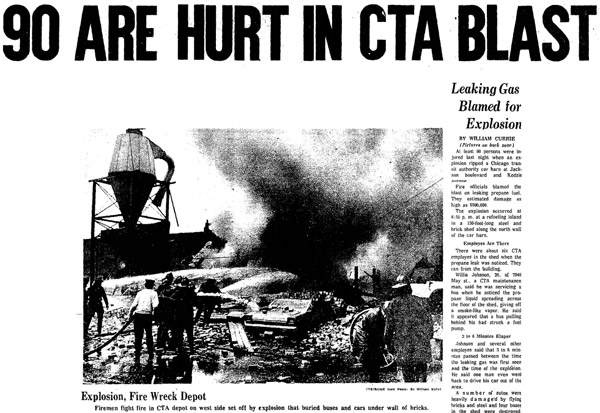
In May 1969, a propane leak at a CTA barn at Jackson and Kedzie caused a massive explosion: "The explosion virtually leveled the shed and blew a 60-foot hole in the north wall of the car barn. Pieces of the sheet-iron roof and the trusses supporting it were carried hundreds of feet by the force of the blast." It blew out windows for four blocks around.
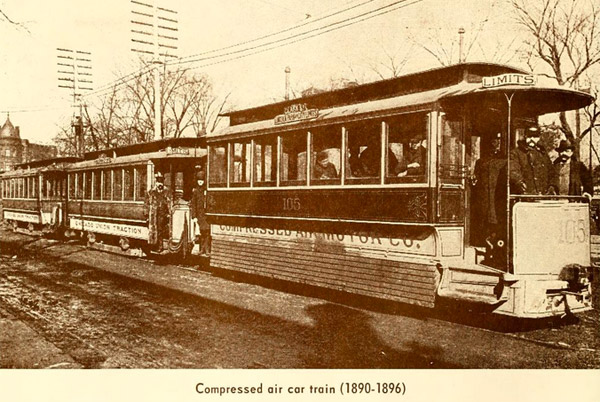
This was more of a thing in New York than Chicago, but the city did have a compressed-air-driven line for awhile:
The Hoadley-Knight engine appeared later on, so that there were two competing concerns on the ground. These were eventually consolidated under the name of Compressed Air Company. Cars were operated in Rome, N.Y., and Chicago, Ill., and numerous installations were made in New York from 1894 to 1899. One that served for a year on the 125th Street Line covered a total of 23,000 miles and carried 137,386 passengers.
Others ran on 23rd, 24th, 28th, and 29th streets. The importation of Mannesmann nickel-steel bottles from Germany permitted storing air at 1500 pounds pressure and increased the number of miles from each charge to 10 or 12. A 1500-hp., 4-stage compressor was set up to provide thehigh-pressure air. The daily newspapers gave considerable space to accounts of these enterprises, as public sentiment was against the electric trolley car, which then had many imperfections and was hazardous.
Tata, an Indian car company, has an air-powered car (the AirPod) in development.
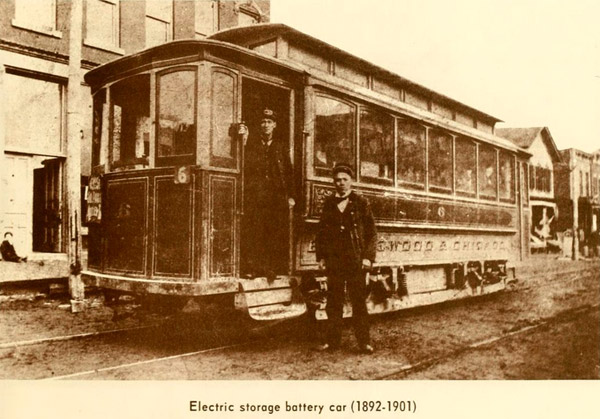
The Englewood & Chicago line ran an electric streetcar (which was typical) with an onboard battery (which was not). The battery was meant to save the cost of running trolley lines, and it worked well until the line started expanding and the technology couldn't scale up (Tribune, 3/31/1900):
Abandonment of the storage battery system was chiefly on account of the mechanical difficulty of charging the batteries in cars on branch lines, which did not run to the central power-house. The system is said to have worked almost perfectly on single lines, but since the road has been acquiring branches it has proved both cumbrous and expensive. The road runs through a sparsely settled neighborhood, except at its terminals, and is not yet able to support more than one large electric plant.
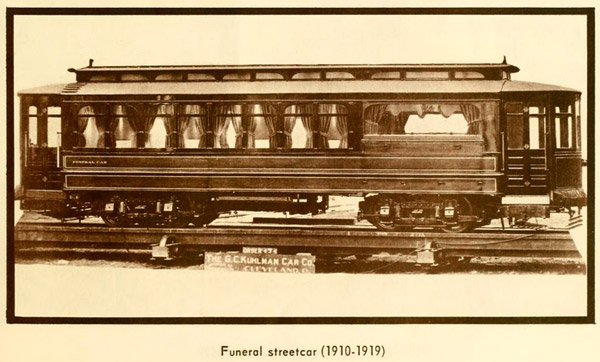
The the first decade of the 20th century, the Met decided to go after an untapped passenger market: the dead. Due to the poor condition of the roads leading to and around the west suburban cemeteries, the Met began to run funeral trains. Jewitt-built car 802 was converted for this purpose, having its advertisements removed and dark green carpet and curtains installed. A window on each side of the car was modified to receive the casket.
The Met's success with this service prompted construction of a new branch directly into Oak Ridge and Mt. Carmel Cemeteries and the Aurora Elgin & Chicago RR's entrance into a partnership with the Met to run the service. By October, 1907, they were running an average of 22 funeral trains a week. The meet the increasing demand, the Met rebuilt car 756 specifically for the purpose, with elegant interior decorations and even a lavatory. In 1932, the AE&C dissolved their agreement with the "L" (now under the control of the CRT) and funeral service ended. By this time, it had became unpopular anyway and by 1934, the AE&C discontinued it too. 756 was renumbered 2756 in 1913 and in 1922, was converted into a mobile medical examining station. It was scrapped in 1953. Interestingly enough, the CTA's charter allows it to run funeral trains, though this clause has never been exercised.
I would really like to arrange for my funeral to include a funeral train, it being still legal and all. (The medical car was for mobile exams of Insull-owned electric railroad employees.)
Below, even more, from Chicago's first bus to the glorious Blue Goose.


